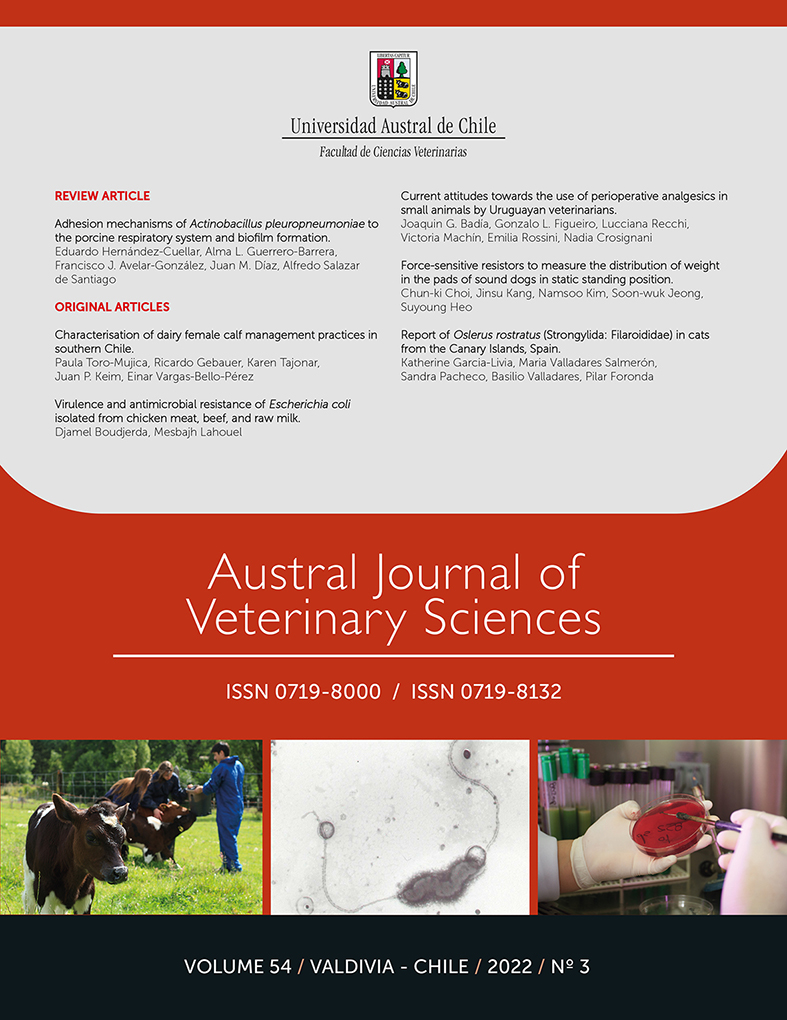Virulence and antimicrobial resistance of Escherichia coli isolated from chicken meat, beef, and raw milk
Main Article Content
Abstract
Two hundred and thirty-five strains of E. coli were recovered from beef, chicken meat, and raw milk sold in butcher shops and markets in the town of Jijel, East Algeria. A PCR investigation revealed the predominance of bacterial strains with extraintestinal pathogenic E. coli (ExPEC) genes (19.91%). Enteroaggregative (EAEC) and enteroinvasive (EIEC) bacteria were also detected. Strains from phylogenetic groups A and B1 were the most common; they accounted for 62.35% and 21.17% in chicken meat, 67.53% and 16.88% in raw milk and 64.38% and 25.97% in beef, respectively, followed by the strains from phylogenetic groups B2 and D. Moreover, E. coli from phylogenetic group D was more abundant in chicken than in beef or raw milk samples (P<0.05). Antibiogram results revealed the presence of three major antibiotic-susceptibility groups and more than a hundred antibiotypes. Between 50% and 70% of strains were resistant to antibiotics of the first group (ampicillin, amoxicillin, trimethoprim, sulfonamide and tetracycline), 20% to 50% to antibiotics of the second group (amoxicillin plus clavulanic acid, kanamycin, streptomycin, ciprofloxacin, flumequine and neomycin) and less than 20% to those of the third group (cephalothin, gentamicin and colistin). Additionally, the resistance to flumequine, trimethoprim, sulfamethoxazole-trimethoprim and tetracycline was more frequent in chicken meat strains than in those from beef and milk. It is important to point out that the strains carrying more than two virulence factors belonged to the B2 or D phylogenetic groups and had weaker resistance to antibiotics. The strains from the A and B1 groups had fewer virulence factors and showed high resistance to antibiotics.

